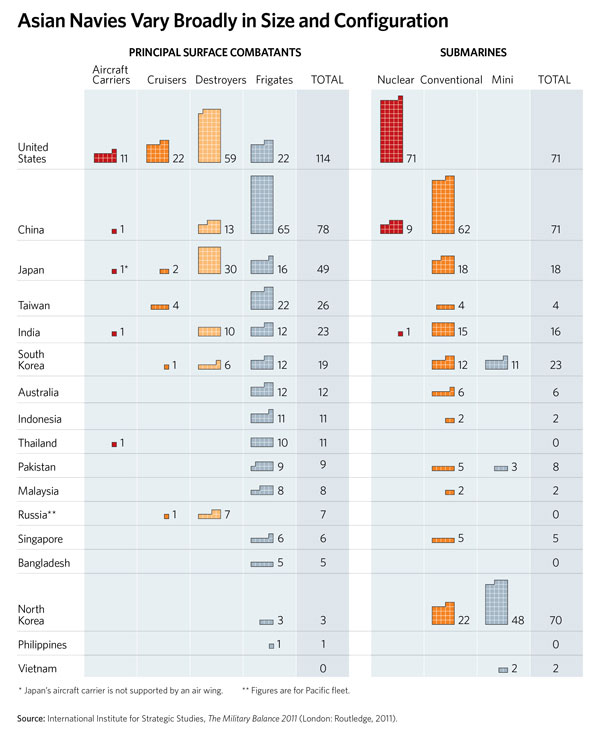Who Is Winning Asia’s Game of Battleship?
Rebecca Graebner /
Tensions between China and Japan over the Senkaku (Diaoyu) Islands have increased due to the recent presence of Chinese patrol boats near Japanese waters. Only a handful of Japanese Coast Guard ships currently patrol the Senkaku Island area, and rumors of a flotilla of 1,000 Chinese fishing vessels heading toward the islands could potentially overwhelm the Japanese fleet.
But it isn’t just Japan’s Coast Guard that is lacking in size and clout—in terms of “surface combatants” (frigates, cruisers, destroyers, and aircraft carriers)—Japan’s naval fleet is only a little more than half the size of China’s fleet. (continues below chart)
China is currently leading Asia’s game of battleship; they have the largest navy in the region and an ever-expanding fleet. (continues below chart)
The 2012 version of Key Asian Indicators: A Book of Charts is now available at heritage.org. Follow the link to access this helpful resource and get information on everything Asia—trends on political/security issues, data on Asia’s fastest growing economies, Asia’s top investors in the U.S. economy, and the real numbers on who owns the most U.S. Federal debt.
Asia is home to more than half the world’s population. Freedom and tyranny live side by side, as do economic opportunity and poverty. East and South Asia have some of the best places in the world to do business, but they also have some of the worst. Asia is home to some of the most unstable, dangerous nations in the world, and it is home to some of the most steady and reliable. It is also home to the only country in the world capable of emerging as a peer competitor for global American influence—the People’s Republic of China. Every year, The Heritage Foundation releases the chart book, illustrating the dynamism of the region.


